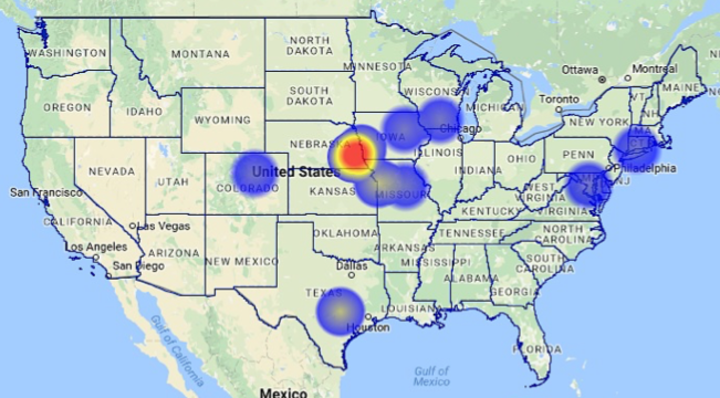Target Bullying Intervention Program
(T-BIP) | AN INDIVIDUALIZED INTERVENTION
What is the T-BIP?
The T-BIP is a FREE individualized program provided by supervised trained specialists for students ages 7 to 18 years old who are involved in bullying whether that be solely through perpetration or both perpetration and victimization. The T-BIP is a one-on-one, three-hour cognitive-behavioral intervention tailored to specific student concerns. T-BIP Specialists help to uncover and address involvement in bullying as well as provide specific recommendations informed by assessments. Recommendations are aimed at stopping bullying involvement and restoring relationships.
*Parental consent and student assent are required before student participation in the T-BIP as de-identified information is used in the Target Bullying Intervention Program Research Study.
For more information about the T-BIP, please see the following handouts and video:
T-BIP Flyer T-BIP Flowchart Parent Handout Teacher Handout T-BIP Research Summary
T-BIP Video T-BIP Flyer in Spanish Parent Handout in Spanish
Evidence Supporting the T-BIP:
Multiple aspects of this cognitive-behavioral intervention (e.g., cognitive restructuring, social skills instruction, emotion regulation instruction, parental involvement) support reductions in bullying behavior. The T-BIP utilizes cognitive-behavioral therapy (CBT) such as cognitive restructuring, which targets cognitive distortions. The literature on hostile attribution bias suggests that individuals who behave aggressively attribute hostile intent to neutral events (Dodge, Price, & Bachorowski, 1990) and better recall hostile social cues than non-hostile social cues (Dodge & Newman, 1981). Lochman & Wells (2002) found that aggressive boys had better outcomes when their hostile attribution biases were reduced through cognitive-behavioral interventions; they had lower levels of delinquency, school problems, and substance use in early adolescence. Together, these findings suggest that cognitive distortions (e.g., hostile attribution bias) are characteristic of aggressive youth and targeting such distortions using CBT is an effective treatment for aggressive youth.
Additionally, the T-BIP is supported by research suggests that cognitive behavioral interventions that increase prosocial behavior and emotion regulation also decrease aggressive behavior (Burke & Loeber, 2016). Furthermore, parental involvement in the T-BIP is reinforced by the findings that cognitive behavioral interventions involving parents reduce aggressive behavior in youth (Johnson & Waller, 2006; Northey, Wells, Silverman, & Bailey, 2003; Southam-Gerow & Kendall, 2000; Burke & Loeber, 2016). The T-BIP has led to positive outcomes for students who have participated. Self-reported bullying behaviors decreased following participation in the intervention (Meints, 2007). In addition to decreasing bullying, a form of disruptive behavior, office discipline referrals and the number of days an individual has been suspended decreased following the T-BIP (Swearer et al., 2014; Berry & Swearer, 2013). Office discipline referrals are correlated with teacher-ratings of externalizing behaviors (McIntosh, Campbell, Russell Carter, & Zumbo, 2009), which further justifies the use of the T-BIP as a Tier III intervention.
Other research on the T-BIP:
Noetzel, A.G., Swearer, S.M., Mosher, K.M., & Loogman, K. (2019, February). Reasons why students perpetrate bullying and implications for intervention. Poster presented at the annual National Association of School Psychologists 2019 annual convention, Atlanta, GA. PDF.
Strawhun, J., Fluke, S. & Peterson, R. (2013, October). The Target Bullying Intervention Program, Program Brief. Lincoln, NE: Student Engagement Project, University of Nebraska-Lincoln and the Nebraska Department of Education. http://k12engagement.unl.edu/target-bullying. PDF.
Swearer, S. M., Wang, C., Berry, B., & Myers, Z. R. (2014). Reducing bullying: Application of social cognitive theory. Theory into practice, 53(4), 271-277. PDF.
Swearer, S.M., Wang, C., Collins, A., Strawhun, J., & Fluke, S. (2014). Bullying: A school mental health perspective. In M. Weist, N. A. Lever, C. P. Bradshaw, and J. S. Owens (Eds.), Handbook of School Mental Health, Second Edition. (pp. 341-354). New York: Springer.
Contact Us
To refer a student to the T-BIP, please contact Dr. Susan Swearer, supervising psychologist, and Melanie Willis, project director.
Email: tbip@unl.edu
T-BIP Interventionists: Where are they now?

Lane Deines
Middle School Psychologist
"We referred a student for bullying behavior regarding racism and making slurs. He has referred to students of color as the "N" word and referred to them as primates. The student met with the T-BIP interventionist, and it sounds like it was a positive experience. The other day it was a very cold morning, and I asked the student if he was a "frozen penguin". He let me politely know that it is not appropriate to refer to others as animals and asked if I could use different verbiage with him. I love this positive change for this student!"
Chris Boden
Assistant Principal
"Addressing bullying concerns is an on-going challenge, and the T-BIP has provided us with a concrete intervention to support students in their developing skills. We work with children as students learning academic skills, and also as leaders and community members. The T-BIP has helped us help kids be their very best."
Rebecca Tegeler
LPS School Counselor
"As a high school counselor, referring a student to participate in the TBIP program was easy! A UNL student came to our school and met with my student for a few hours, sharing information that was age appropriate and relevant to her needs. Follow-up support and communication with our staff was a huge benefit. Student problem behavior decreased and time in class increased. I will use this intervention again!"